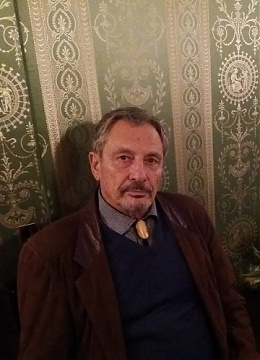Editor's note
International Internet Magazine. Baltic States news & analytics
Tuesday, 20.01.2026, 14:34
Towards the Baltic States’ energy security
 Print version
Print version |
|---|
At the October’s summit, the member states leaders agreed to
invest an unprecedented sum of almost a trillion euros (to be exact, €
998 million) in key European energy infrastructure projects; the
investment will provide financial aid for research, development and
implementation innumerous sustainability projects in different parts of Europe.
The largest amount of funding goes to the Baltic
Synchronisation Project (€720 million) with the aim of a better
integrating the electricity markets in the eastern Baltic states, i.e. Estonia,
Latvia, Lithuania and Poland with the rest of the EU-27.
More on the Baltic energy security issues in: https://ec.europa.eu/commission/presscorner/detail/en/IP_19_3337
General reference to: https://ec.europa.eu/commission/presscorner/detail/en/IP_20_1803
Green deal projects
The allocation of funds for the infrastructure projects was
in line with the objectives of the European Green Deal, with 84% of funds going
to electricity or smart grid projects. The grants are aimed at providing
financial aid for ten projects: two for electricity transmission, one for smart
electricity grids, six for CO2 transport (including five studies), and one for
gas.
More on the projects’ effect on the “green deal” in:
https://ec.europa.eu/info/strategy/priorities-2019-2024/european-green-deal_en
Baltic Synchronization Project (phase II - €720 million)
Together with the previous investment, the new funding will
go to the construction of a so-called “harmony link” - an electricity cable
connecting Poland and Lithuania through the Baltic Sea. The cable will become a
building block for the future offshore grid in the Baltic Sea. This funding
will also cover investments such as synchronous condensers in Estonia, Latvia
and Lithuania.
For historical reasons, however, the Baltic States'
electricity grid is still operated in a synchronous mode with the Russian and
Belarusian systems.
The Baltic States region is now connected with the EU
partners through recently established electricity lines: with Poland through
the LitPol Link, with Sweden through NordBalt, and with Finland through Estlink 1 and Estlink 2.
More in a roadmap on synchronization target date of 2025 in
June 2019 decision: https://ec.europa.eu/commission/presscorner/detail/en/IP_19_3337
Probably, another project is of the “Baltic’s interest” too:
North
Sea Wind Power Hub with €14
million investment into a study to support research and development of a project
for the exploration of the offshore wind facilities in the North Sea.
More on the projects in: - Current
list of 'projects of common interest'; and -Innovation & Networks Executive Agency
(INEA).
A special and big step was taken during the summit towards
connecting the Baltic States with the rest of the EU: the financing of € 720
million from the Connecting Europe Facility to link the Baltic energy grid with
the rest of Europe. This project is a landmark moment to end the Baltic States’
energy market isolation: most of the funding will go to a new interconnector - the
“harmony link”. It will reduce the region's over-dependence and over-reliance
on a single source of energy imports by connecting it in full harmony to the
rest of the EU-27. The project is also oriented towards future: the new
offshore energy grid will bring electricity from renewables to all countries
around the Baltic Sea.
Besides, during the summit, the “Baltic Declaration for
Offshore Wind Energy” was signed by the Commission and eight EU states adjacent
the Baltic Sea region; the project is a good example of connecting Europe, of securing
the sub0region’s energy security and the European Green Deal’s implementation.
Source: Commission press release at: https://ec.europa.eu/commission/presscorner/detail/en/STATEMENT_20_1812
- 2.x.2020.











